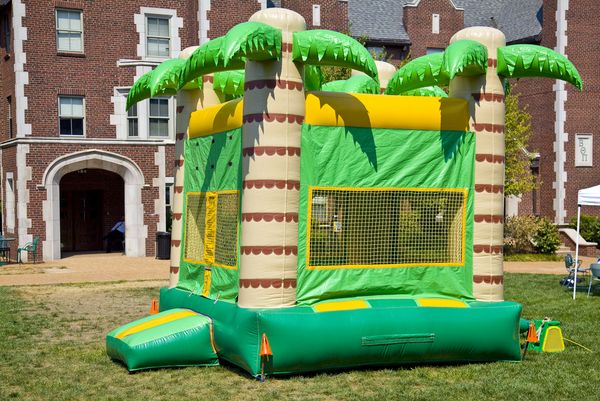'Bouncy House' Injuries on the Rise

Injuries related to inflatable bouncers, a type of outdoor play area for children, have risen rapidly in recent years, a new study finds.
There was a fifteenfold increase in the number and rate of children treated by emergency departments for injuries related to inflatable bouncers between 1995 and 2010, and the rise was particularly sharp between 2008 and 2010, according to the study.
It's likely that the increase is due to an increased use of bouncers, said study researcher Dr. Gary Smith, director of the center for injury research and policy at Nationwide Children's Hospital in Columbus, Ohio. However, the data did not explain the reason for the rise, and other factors — such as parents increasingly taking children to emergency departments for treatments — could also play a role, he said.
Although Smith said he has observed an increase in bouncer injuries at his own hospital, he hadn't expected the national data to show such a large jump in the number of injured children.
"It was a surprise how rapidly the number has increased — it doubled between 2008 and 2010," he said. "That's an epidemic by any definition."
In the study, Smith and colleagues gathered information from a database maintained by the Consumer Products Safety Commission. About 100 U.S. hospitals submit data from their emergency departments to the database.
Based on this sample, the researchers estimated that there were nearly 65,000 cases of children treated for bouncer-related injuries between 1990 and 2010 in the U.S. Children between ages 6 and 12 accounted for slightly more than half of the injuries, and children under age 5 accounted for more than a third of the injuries.
Sign up for the Live Science daily newsletter now
Get the world’s most fascinating discoveries delivered straight to your inbox.
In 1995, the rate of such injuries was about 1 case per 100,000 children, in 2008, there were 7.2 cases per 100,000 children, and in 2010, there were 15.2 injuries for every 100,000 children.
About 75 percent of injuries occurred between April and October, with the peak happening in June, according to the study.
Most of the injuries were not serious, Smith said. In about 3 percent of cases, children were admitted to the hospital — in most of these cases, the injury was a bone fracture.
"We see fractures all the time, and only a very small number need admission. So these are serious fractures," such as fractures around the elbow, Smith said.
About 1 in 5 cases were head or neck injuries, according to the study. Serious injuries such as paralysis can happen, but there were no such cases reported in the study, Smith said. Cases of paralysis are more likely to occur on trampolines than bouncers, he noted.
Parents can take steps to reduce their children's risk of injury when playing on bouncers, he said.
Smith recommended:
- Placing bouncers on grassy surfaces, rather than over less-forgiving concrete or asphalt.
- Not allowing children to do "stunts" such as flips, which greatly increase the risk of spinal cord injuries.
- Limiting the use of bouncers to children age 6 and older, because smaller children are at greater risk for injuries.
- Reducing the risk of collisions by limiting the bouncer to use by one child at a time, or ensuring that the children using the bouncer are of nearly equal age and weight (a smaller child is at greater injury risk when sharing a bouncer with a larger child).
Pass it on: Injuries related to children's "bouncy houses" have risen rapidly in recent years.
This story was provided by MyHealthNewsDaily, a sister site to LiveScience. Follow MyHealthNewsDaily on Twitter @MyHealth_MHND. We're also on Facebook & Google+.












